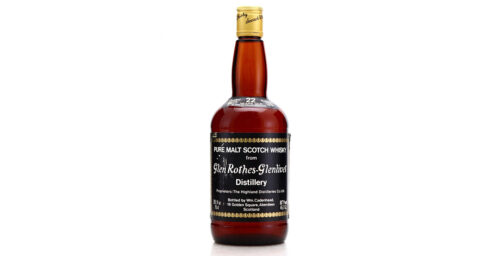Editor’s Note: This is Part 1 of a 9-part series about Baudoinia compniacensis. the whiskey fungus. It comes to us via a reprint from the original article at Chuck’s site.
“Whiskey Fungus Fed by Jack Daniel’s Encrusts a Tennessee Town,” was the headline in the New York Times digital edition on March 1. A version of the article appeared in print on Sunday, March 5, Section A, Page 18, of the New York print edition with the headline: “Whiskey Fungus Coats A Tennessee Town.”
That particular combination, the world’s best-selling whiskey and one of the world’s most-read news sources, gives the subject heightened visibility and while Michael Levenson did a fine job of reporting, there was not a lot new to report. Construction of warehouses at a stand-alone maturation facility for Jack Daniel’s has been halted temporarily (probably) because of a neighbor’s Baudoinia complaint. The online version includes a convenient link to a nearly identical story from 2012 about a similar ruckus in Louisville.

If you liked Old Blowhard, Barterhouse, or any of Diageo’s other Orphan Barrel bourbons, you probably should thank Baudoinia compniacensis, the black fungus that is troubling Jack Daniel’s and likely forced Diageo’s hand in releasing those whiskeys almost ten years ago.
In the beginning, Diageo did not want to reveal anything about its Orphan Barrel bourbons. Then they relented and told where they were distilled and their mash bills, but many questions remained unanswered.
One of the biggest was why? American whiskey distilleries usually don’t let whiskey age 20 years or more on purpose with no plan for its eventual use. They may let a few barrels go that long, just to see what happens, but they typically use or sell most of it long before it gets that old.
Since the early part of the 21st century, when most of that whiskey was still young, it has been easy to sell bulk whiskey to the many non-distiller producers looking for something to package and sell. Demand has been strong and prices have been good. So why did Diageo let a large inventory of bourbon sit in warehouses at its otherwise-shuttered Stitzel-Weller Distillery, year after year? They didn’t try to sell it. No one outside the very secretive company even knew it existed.
Because of Orphan Barrel, we now know the whiskey was old and there was a lot of it, thousands of barrels. They won’t tell us how many but based on the sequential numbers on Orphan Barrel bottles (numbers up to 84,000 were reported for some releases), it was thousands of barrels. Barrels that old lose a lot to evaporation, but that is still an enormous amount of whiskey.
So why, after sitting on it with no plans for it, for up to two decades, did they suddenly start to sell it in 2014?
The reason, it appears, is fungal. Not fungus in the whiskey, fungus on the houses, cars, and lawn furniture of Stitzel-Weller’s neighbors. And those neighbors were angry about it.
Baudoinia, the whiskey fungus, stains property near whiskey maturation facilities wherever they may be, from Louisville, Kentucky, to Lincoln County, Tennessee and beyond. It has been studied for more than 150 years. Baudoinia can and does grow everywhere but it grows faster and hardier in the presence of ethanol vapor.
There is zero evidence Baudoinia is hazardous to health, but it is an ugly nuisance. It is also an unavoidable by-product of aged spirits production.
In the case of Diageo’s Orphan Barrels, Baudoinia has been part of Stitzel-Weller’s neighborhood since the distillery opened in 1934, but after 1969 bourbon sales began to tumble and so eventually did production. As the industry adjusted to the new sales reality, inventory levels at Stitzel-Weller and other distilleries fell, and with them prevalence of the fungus.
When warehouses began to fill up again with the current bourbon boom, the fungus made a comeback too. To homeowners who moved near distilleries during the downturn, it was something new, leading to much power-washing and loud complaining.
NEXT TIME: how the Metro Louisville Air Pollution Control District got the ball rolling in 2012.







